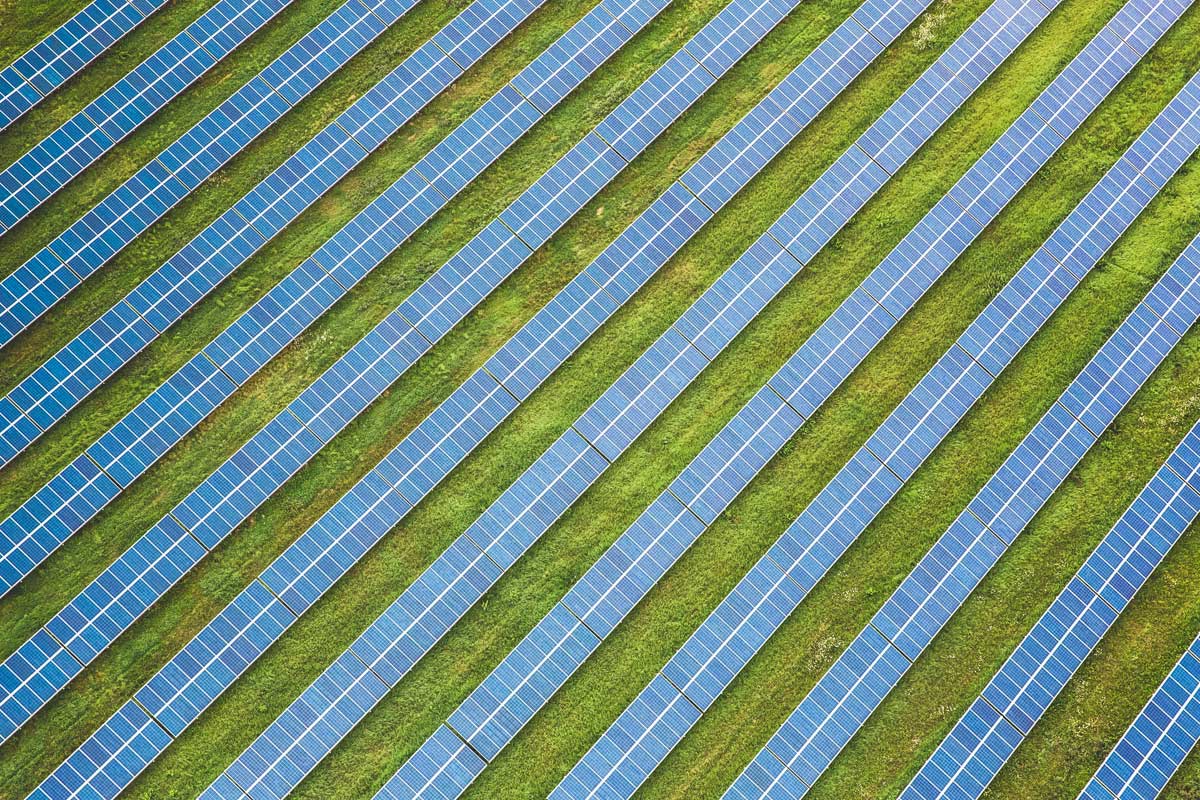New Sources of Renewable Energy in Indonesia: Current Development and Future Prospects
September 22, 2024

As one of the largest and most populous nations in Southeast Asia, Indonesia faces growing energy demands that need the expansion of its energy production capacity. Traditionally, the country has relied on fossil fuels, particularly coal, oil, and natural gas, to power its economy. However, the need to reduce greenhouse gas emissions, improve energy security, and meet the goals outlined in the Paris Agreement has led Indonesia to explore alternative, renewable energy sources. In this context, Indonesia has committed to diversifying its energy mix, aiming to achieve 23% renewable energy use by 2025 and 31% by 2050 (Indonesian Ministry of Energy and Mineral Resources, 2020). This article explores new renewable energy sources in Indonesia, discusses the country’s progress in their development, and highlights the challenges that need to be addressed.
Overview of Renewable Energy in Indonesia
Indonesia is endowed with vast natural resources, many of which have the potential to be harnessed for renewable energy. Currently, the country’s renewable energy mix includes hydropower, geothermal, bioenergy, wind, and solar energy. These resources are in varying stages of development, with some more advanced than others. While hydro and geothermal energy are relatively mature sectors, other renewable sources such as solar, wind, and marine energy are still in the early stages of development.
The Indonesian government has outlined its renewable energy strategy in its National Energy Policy (KEN) and the General Plan of National Energy (RUEN). These plans set ambitious goals for increasing the share of renewable energy in the national energy mix and reducing the country’s reliance on fossil fuels (MEMR, 2020). Achieving these goals requires the development of new energy sources and a concerted effort to overcome existing regulatory, financial, and technical challenges.
Solar Energy: A Bright Prospect
Solar energy is one of the most promising renewable energy sources in Indonesia, owing to the country’s geographical location near the equator. Indonesia receives abundant sunlight year-round, with an average solar irradiation of 4.8 kilowatt-hours per square meter per day (Asia Development Bank, 2021). This makes solar energy a highly viable option for both centralized and distributed power generation.
Despite its vast potential, solar energy currently plays a minor role in Indonesia’s energy mix. As of 2022, solar power accounted for less than 1% of the country’s total energy capacity (MEMR, 2022). However, the government has recognized the importance of solar energy and has taken steps to encourage its development. One of the key initiatives is the installation of rooftop solar panels, which has gained momentum in recent years due to government incentives and declining costs of solar photovoltaic (PV) technology.
Several large-scale solar projects are also under development. For instance, Indonesia’s first floating solar power plant, the Cirata Floating Solar Project, is expected to be operational by 2024. With a planned capacity of 145 MW, it will be one of the largest floating solar projects in Southeast Asia (Jakarta Post, 2021). Additionally, the government has announced plans to install more solar power plants in remote and underserved areas to provide reliable electricity to communities that currently lack access to the national grid.
The challenges for solar energy development in Indonesia include grid integration, land acquisition, and regulatory barriers. Many of Indonesia’s solar projects are located in remote areas, making it difficult and costly to connect them to the national grid. Moreover, regulatory frameworks need to be improved to streamline permitting processes and provide more attractive incentives for private investors.
Wind Energy: Harnessing Indonesia’s Coastal Winds
Indonesia’s vast coastline and numerous islands make it an attractive location for wind energy development. Wind energy has significant potential in certain regions of the country, particularly in East Nusa Tenggara, South Sulawesi, and West Java. Wind speeds in these areas range between 5 to 6 meters per second, which is suitable for commercial wind power generation (Global Wind Energy Council, 2022).
The development of wind energy in Indonesia has been slow compared to solar and geothermal energy, primarily due to technical and regulatory challenges. However, the country has made notable progress in recent years. The Sidrap Wind Farm in South Sulawesi, which has a capacity of 75 MW, became operational in 2018 and was the first utility-scale wind power plant in Indonesia (Darmawan, 2018). This project demonstrated the feasibility of wind energy in the country and has paved the way for further investments in the sector.
Several other wind projects are currently under development, including the Tolo Wind Farm in South Sulawesi and the Jeneponto Wind Farm. These projects are expected to significantly increase Indonesia’s wind energy capacity in the coming years. The
government is also exploring the possibility of offshore wind energy development, which could tap into stronger and more consistent wind resources.
The primary challenges for wind energy development in Indonesia include site selection, infrastructure development, and high initial investment costs. Many of the best wind resources are located in remote or mountainous areas, which pose logistical challenges for the construction and maintenance of wind farms. Additionally, the lack of local expertise in wind energy technology has slowed the sector’s growth, though the government is working to address this through international partnerships and knowledge transfer initiatives.
Geothermal Energy: A Mature Sector with Untapped Potential
Geothermal energy is one of Indonesia’s most significant renewable energy sources. As part of the Pacific Ring of Fire, Indonesia has some of the world’s richest geothermal resources, with an estimated potential of 28 gigawatts (GW) (International Renewable Energy Agency, 2020). The country is already the second-largest producer of geothermal energy in the world, after the United States, with an installed capacity of 2.1 GW (Indonesian Geothermal Association, 2020).
Geothermal energy plays a crucial role in Indonesia’s energy transition efforts. It is considered a reliable and consistent source of baseload power, unlike solar and wind energy, which are intermittent. Several large geothermal power plants, including the Wayang Windu and Sarulla plants, contribute significantly to Indonesia’s electricity grid.
However, despite its potential, geothermal energy is still underutilized in Indonesia. The high upfront costs of geothermal exploration and development have hindered the sector’s growth. Geothermal projects require significant investment in drilling and infrastructure, and there are considerable risks associated with resource uncertainty. To mitigate these challenges, the Indonesian government has implemented a range of policies to encourage geothermal development, including providing incentives for private investment, offering risk mitigation mechanisms, and simplifying permitting processes (Indonesian Geothermal Association, 2020).
In the coming years, Indonesia aims to significantly increase its geothermal capacity. The government has set a target of 7.2 GW of installed geothermal capacity by 2025, which would make geothermal energy a cornerstone of the country’s renewable energy strategy (MEMR, 2020).
Bioenergy: Leveraging Agricultural and Forestry Resources
Bioenergy is another renewable energy source that has significant potential in Indonesia, particularly given the country’s vast agricultural and forestry resources. Bioenergy can be derived from various feedstocks, including palm oil residues, sugarcane bagasse, rice husks, and wood waste. Indonesia is one of the world’s largest producers of palm oil, and the byproducts of palm oil production, such as empty fruit bunches and palm kernel shells, can be used to generate electricity and produce biofuels.
Currently, bioenergy accounts for a small but growing share of Indonesia’s energy mix. The country has several biomass and biogas power plants, particularly in rural areas where they provide decentralized energy solutions. The government has also promoted the use of biofuels, particularly biodiesel, as part of its efforts to reduce the use of fossil fuels in the transportation sector. Indonesia’s B30 program, which mandates a 30% blend of biodiesel with conventional diesel, is one of the most ambitious biofuel policies in the world (MEMR, 2020).
While bioenergy holds promise, there are challenges to its expansion. One concern is the sustainability of feedstock supply, particularly given the environmental and social issues associated with palm oil production. There are also technical challenges related to the conversion of biomass into energy, as well as competition with other uses of agricultural residues.
To promote sustainable bioenergy development, Indonesia is focusing on improving the efficiency of biomass and biogas technologies, enhancing supply chain management, and implementing certification schemes to ensure the sustainability of feedstock production (WWF Indonesia, 2020). The government is also exploring the use of second-generation biofuels, which are derived from non-food feedstocks and have lower environmental impacts than conventional biofuels.
Marine Energy: Untapped Opportunities
As an archipelagic nation with over 17,000 islands, Indonesia has enormous potential for marine energy development. Marine energy, which includes tidal, wave, and ocean thermal energy conversion (OTEC), is an emerging sector that could provide a significant source of renewable energy for Indonesia’s coastal regions.
Tidal energy, in particular, is seen as a promising option due to Indonesia’s strong tidal currents, especially in the narrow straits between islands. The government has identified several potential sites for tidal energy development, including the Lombok Strait and the Alas Strait (International Energy Agency, 2021). However, marine energy technology is still in its infancy in Indonesia, and there are significant technical and financial challenges to its development.
The Indonesian government, in collaboration with international partners, is conducting feasibility studies and pilot projects to explore the potential of marine energy. One such project is the Palu Bay Tidal Energy Project, which aims to develop a 10 MW tidal power plant in Central Sulawesi (Jakarta Globe, 2020). If successful, this project could pave the way for larger-scale marine energy development in Indonesia.
The primary challenges for marine energy development include the high costs of technology, the lack of infrastructure, and the need for further research and development. Marine energy technologies are still relatively new and expensive compared to other renewable energy sources, and significant investment is required to scale up their deployment.
Conclusion
Indonesia’s renewable energy sector is undergoing a period of transformation as the country seeks to diversify its energy mix and reduce its reliance on fossil fuels. Solar, wind, geothermal, bioenergy, and marine energy all hold significant potential to contribute to Indonesia’s energy future. While there has been notable progress in the development of some renewable energy sources, particularly geothermal and solar energy, other sectors, such as wind and marine energy, are still in the early stages of development.
To fully realize its renewable energy potential, Indonesia must address several challenges, including regulatory and financial barriers, infrastructure development, and the need for technical expertise. The government has already taken steps to create a more favorable environment for renewable energy investment, but further efforts are needed to accelerate the transition to a cleaner and more sustainable energy future.
As Indonesia continues to develop its renewable energy resources, it has the opportunity to not only meet its growing energy demands but also contribute to global efforts to combat climate change and achieve the United Nations Sustainable Development Goals.
Search
RECENT PRESS RELEASES
Related Post



